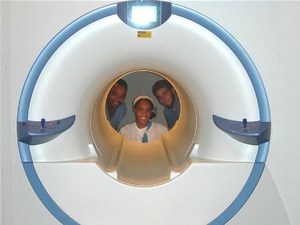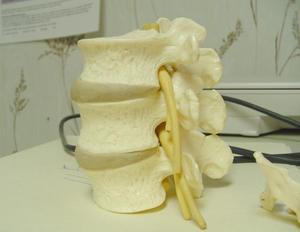If your back or neck pain has you considering the Laser Spine Institute for salvation, here is exactly what’s involved. My father underwent laser spine surgery.
The process began at a seminar given by the Laser Spine Institute. He brought with him the CD of his MRI that had been done through his HMO.
The founder of the Laser Spine Institute viewed the image on a computer and immediately diagnosed the condition, then briefly explained how it would be corrected. He also explained why my father’s back surgery (laminectomy) last year failed.
A representative of Laser Spine Institute then took some basic information from my father, gave him a number to call, and calculated an approximate cost of the surgery. My father contacted the Laser Spine Institute facility in Arizona. They got back to him within a few days and got him scheduled for surgery about two weeks later.
However, prior appointments with the Laser Spine Institute were necessary. The first appointment involved many questions asked of my father by a physician’s assistant, about his health and surgical history, pain details, physical activity/limitations, etc.
The PA then made sure they had all the records from my father’s HMO, Kaiser Permanente. She then arranged for an X ray and MRI (they do MRIs on site – even though my father had had one just a few months prior). Next, he met with the anesthesiologist who explained what kind of anesthesia would be involved (deep sleep, not general anesthesia). My father then had the MRI and X ray.
Next day, a physiatrist (medical doctor who specializes in treating pain, injuries, physical issues) met with us and presented on a large screen two MRI images of my father’s spinal column, explaining what was there.
He talked more about the surgery and how it’s done. It was arranged for my father to be given a nerve root block to pinpoint the source of pain. The block is injected (Lidocaine) at the suspected location, and the idea is that if it wipes out much of the pain, that’s the problem area or main problem area.
If it doesn’t, then another suspect area is blocked, until the problem area is located. This occurred after my father was told to incite the pain by walking (since it was absent while sitting) to a level 5 (pain scale of zero to 10). Prior to the block they again went over health history, etc.
After this procedure, the problem was diagnosed as primarily L-3 stenosis (at the seminar the surgeon diagnosed L-4 and L-3 stenosis). The next step was to give payment to the Laser Spine Institute, and then surgery time was sealed. We were told that surgery takes 1-2 hours, and surgical recovery takes 1-2 hours.
Surgery was scheduled for 8:30 am. My father had to arrive two hours early for prep. Two and a half hours after surgery, we were summoned to the recovery room. My father was very awake; didn’t seem like he had been deeply asleep.
He was walked to a recliner chair where he received post-op instructions (e.g. taking antibiotics, icing the surgical site, showering instructions), and met with the surgeon. The Laser Spine Institute won’t send patients home until they can tolerate food without getting sick, so they brought him a nice lunch meal.
The next day the PA took his vitals, changed the dressing, reviewed the wound, presented us with a wound care instruction sheet, plus physical therapy prescription. He then was evaluated by a physician extender. The Laser Spine Institute does not believe in lumbar supports. My father was then discharged.



